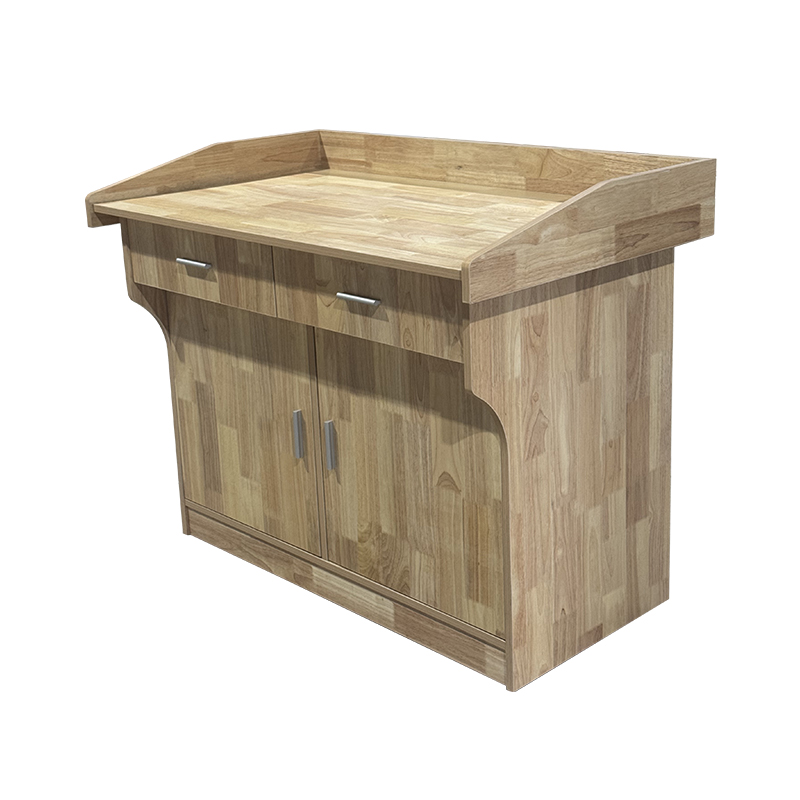
The design of classroom furniture plays an important role in shaping teaching environments. Among various fixtures, teacher podium lecture tables are essential components that support daily instruction and provide a central space for teaching materials and devices. As educational institutions upgrade their spaces, the choice of materials for these tables becomes a critical consideration. From traditional wooden builds to modern metal constructions, each option brings its own set of features, aesthetics, and practical benefits.
Historically, wood has been the preferred material for teacher podium lecture tables. Its warm appearance and sturdy structure align well with many traditional classroom settings. Wooden tables offer a timeless look and often blend seamlessly with other furniture in the room. They are also relatively easy to repair and refinish if damaged. However, over time, wood can be vulnerable to scratches, moisture, and wear, especially in high-use environments. Institutions that value a classic aesthetic often continue to choose wood, but they must also consider long-term care and maintenance.
In contrast, metal teacher podium lecture tables are gaining popularity for their durability and modern appeal. Metal constructions can withstand daily wear and are less likely to be affected by humidity or accidental impacts. This makes them particularly suitable for science labs, technology rooms, or environments where furniture needs to be more resistant to damage. Additionally, metal allows for sleek, minimalist designs that appeal to schools looking for a more contemporary classroom setup.
The shift from wood to metal also reflects broader changes in education infrastructure. With more classrooms incorporating digital tools like interactive screens, microphones, and document cameras, teacher podium lecture tables must be able to accommodate cables, power sources, and integrated storage. Metal tables often offer more flexibility in this regard, allowing for built-in cable management systems, ventilation for electronic devices, and modular configurations that support various teaching styles.
Despite these advantages, metal does come with trade-offs. Some users may find metal surfaces less comfortable or less visually inviting compared to wood. To address this, many manufacturers now offer hybrid designs that combine the durability of metal with the warmth of wood finishes. These mixed-material teacher podium lecture tables aim to provide a balanced solution that meets functional needs while maintaining a welcoming classroom environment.
Cost is another factor that influences material selection. Wooden podium tables, especially those made from solid hardwoods, can be more expensive due to material sourcing and craftsmanship. On the other hand, mass-produced metal tables may offer a more economical solution for large-scale educational institutions. However, pricing also depends on factors such as customization, accessories, and shipping.
In recent years, sustainability has also entered the conversation. Schools increasingly look for furniture that aligns with environmental goals. While wood is a renewable resource, responsible sourcing and certification become important. Metal, particularly when recycled or recyclable, also appeals to institutions aiming to reduce their ecological impact. Teacher podium lecture tables made from environmentally conscious materials can support green building initiatives and appeal to students and staff who value sustainability.
The choice of material for teacher podium lecture tables depends on a combination of aesthetics, functionality, durability, and budget. Whether crafted from wood, metal, or a combination of both, these tables continue to evolve alongside changes in classroom technology and teaching methods. Institutions must weigh the specific needs of their learning spaces to determine which materials will provide the best balance of style and practicality in the long term. As classroom design becomes more flexible and technology-integrated, the material choices behind podium tables will remain a significant part of educational planning.


 English
English русский
русский Español
Español عربى
عربى
